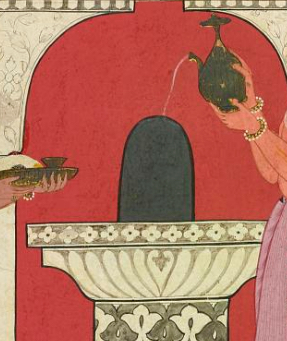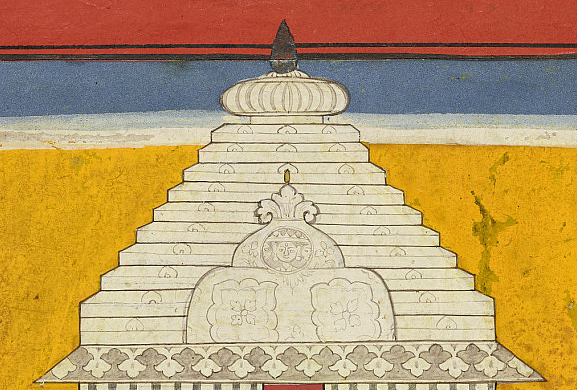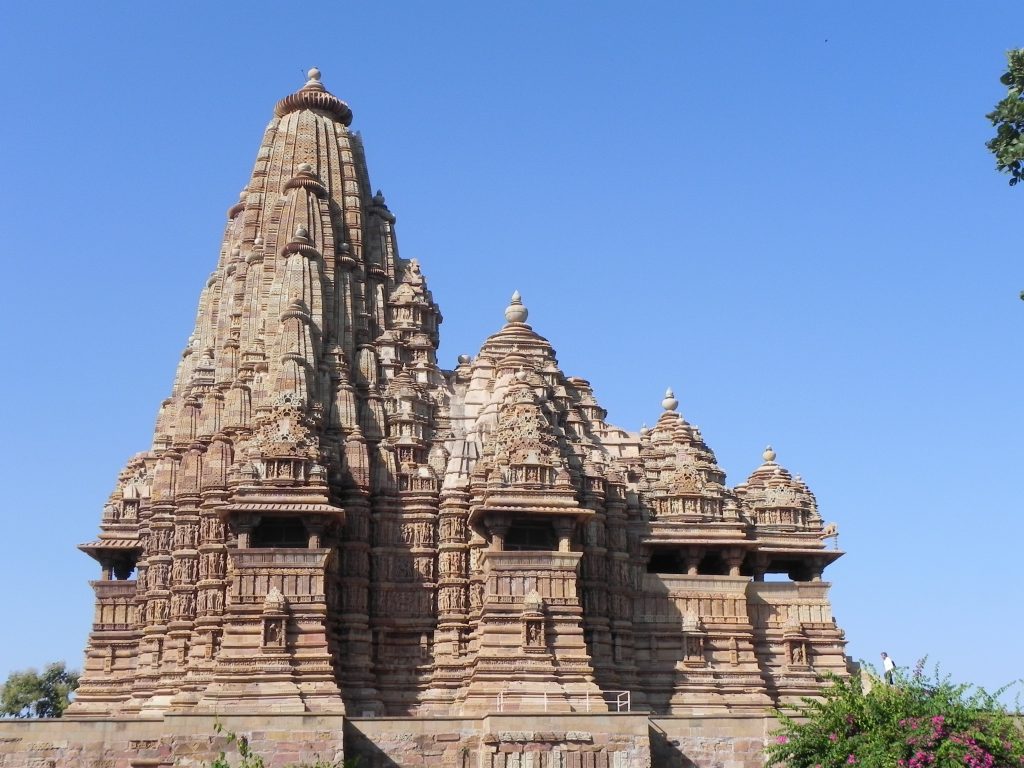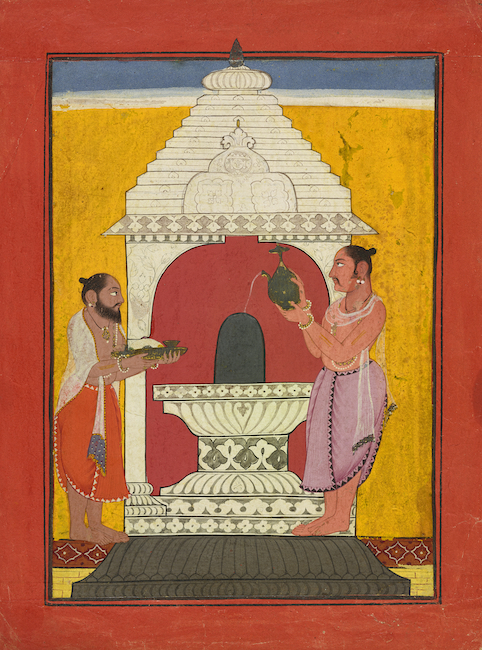Shankarabharana Ragaputra
Shankarabharana Ragaputra
India, Himachal Pradesh, Bilaspur, ca. 1680-1690
Opaque watercolor and gold on paper
Courtesy the Arthur M. Sackler Gallery, Smithsonian Institution, Washington, D.C.: Purchase and partial gift from the Catherine and Ralph Benkaim Collection — funds provided by the Friends of the Freer and Sackler Galleries, S2018.1.64
The Shankarabharana Ragaputra showcases an important religious ritual (puja) to the Hindu god Shiva. Two priests in the inner sanctum of a Hindu temple worship a Shiva Lingam. The Sanskrit name of the painting and the musical mode is Shankarabharana which means the “Ornament of Shiva,” indicating the religious mood of the raga.

This painting depicts a religious ritual in which two Brahmin priests in a stone Hindu temple worship at a Shiva Lingam. The lingam is an aniconic form of Shiva that is typically present in Shiva temples, where it receives offerings such as milk, water, flower petals, fruit, fresh leaves, and rice. In this painting, the priest on the right is shown pouring water on the lingam while the priest on the left presents a plate with offerings to honor Shiva.
This painting was made in Bilaspur in what is now the state of Himachal Pradesh, in northern India. Ragamala series were notably prominent in the Pahari Hill kingdom of Bilaspur. The Pahari style of painting developed through interaction between local and Mughal traditions and flourished between the seventeenth and nineteenth centuries. Rajput artists in the Pahari hills, including those in Bilaspur, used delicate lines and vibrant colors like red, yellow, and blue in their ragamalas. The colors, symmetry, and two-dimensionality of this raga are characteristic ofthe artistic features associated with late seventeenth century painting from Bilaspur. The architectural, temple structure is depicted with a frontal, two-dimensional view. The roof is elaborately decorated with ridged capstones and a distinctive ornament at top (amalaka). The temple and shrine containing the lingam are both small, especially in relation to the size of the priests.

The roof of the Shiva temple in the Shankarabharana Ragaputra is decorated with relief carvings, ridged capstones, and a finial (amalaka) which indicates it is modeled after north Indian style temples.

Northern style temples (nagara) typically have decorations along their towering beehive shaped roofs. The Kandariya Mahadeva Temple created around the year 1000 at Khajuraho, provides an example of a Northern style temple that this painting emulates.
Illustrated ragas are associated with different seasons, times of day, and specific emotions. The scene illustrated in this painting was likely based on verses by the sixteenth-century priest Mesakarna, which evoke the sacred (shanta) mood. Musical compositions can be intimately linked to visual imagery, but in this case, the musical mode does not appear to be connected to the raga. The Shankarabharana musical mode was meant to emphasize the beauty of the voice and is more common in the Carnatic system of music associated with southern India. It is intriguing, therefore, that this is a north Indian example.
